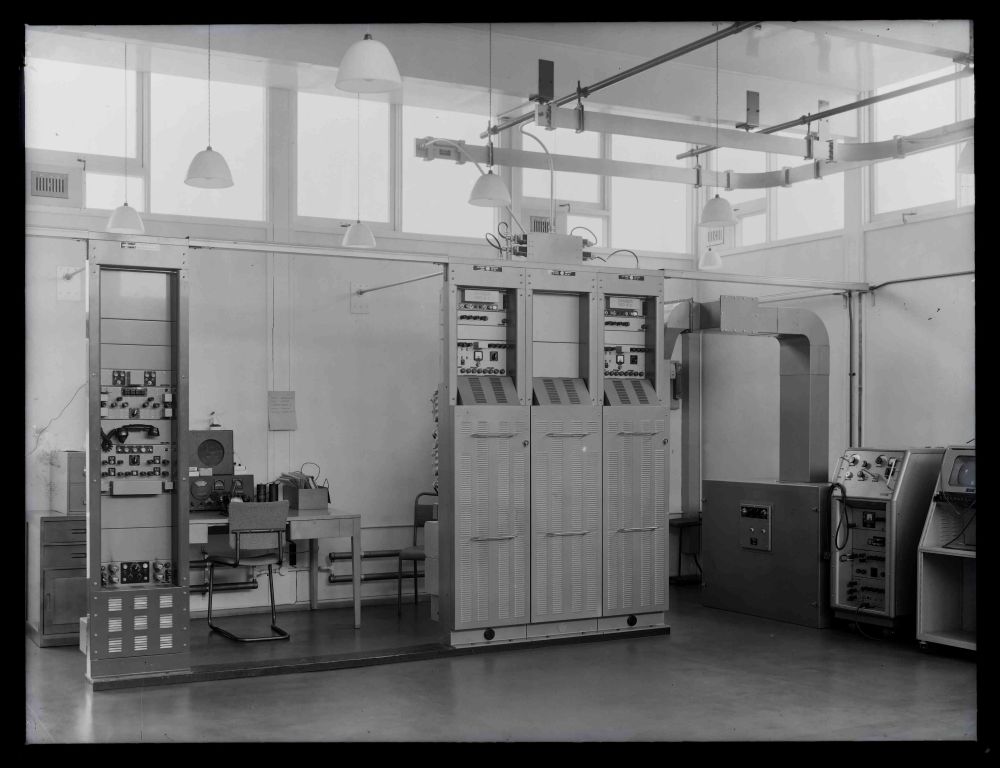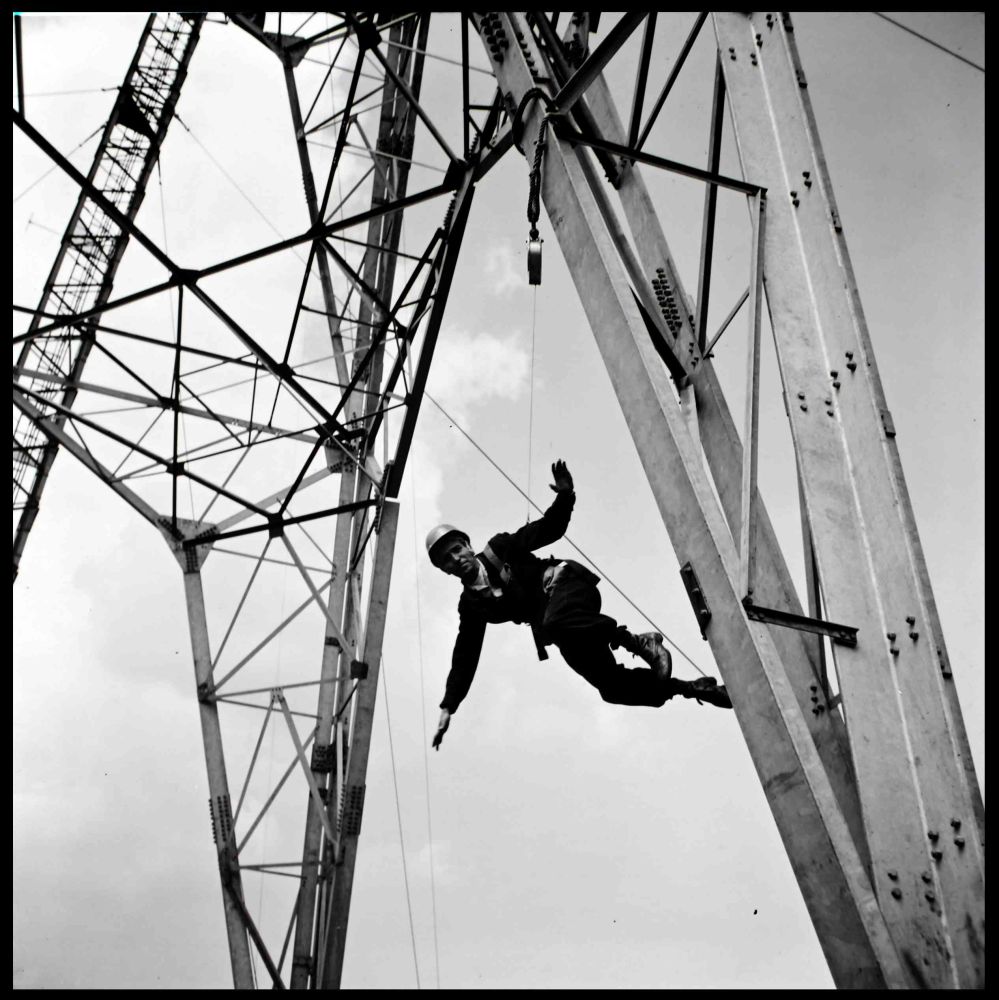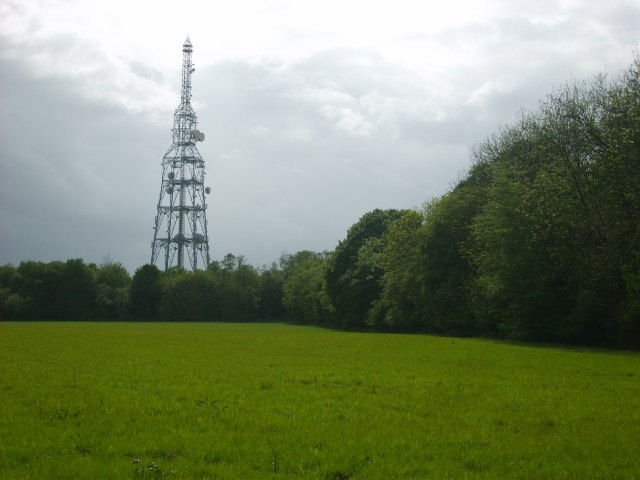History
The 1956 "Backbone" map lists Kelvedon Hatch as a planned site however it was established initially around 1959 as part of a link from London to Norwich for Anglia Television, at 2 GHz. At this point the site used a relatively short guyed mast carrying two dishes, with a timber building.
In 1965 the site was used (along with Pimlico and the ITA television site at Croydon) for the new London Radiophone service. The Post Office Electical Engineers' Journal reported "Kelvedon Hatch and Pimlico are Post Office radio stations and the radiophone aerials are accommodated on 300 ft towers provided for other purposes." It would seem by 1965 the "Backbone" link was at least under development: the Engineer-in-Chief's Annual Report includes "Chilterns" to "Ongar" and "Ongar" to "Maidstone" as telephony links planned during the year 1961-62. The three locations are assumed to be Stokenchurch, Kelvedon Hatch and Fairseat. Subsequent reports do not mention these links but their completion would have been dependent on progress with towers at the other sites.
Kelvedon Hatch is mentioned in a pencilled note in papers relating to the Linesman/Mediator radar links - one of which appears to have been planned along the 1959 television route to connect Neatishead to the control at West Drayton. It is, however, unclear what issue was causing difficulty at that time.
The London to Leeds SHF route was planned in the 1960s, running via Kelvedon Hatch and diverging from the Norwich route at Sibleys. The site received a "standard tower" in the late 1960s to increase capacity. Although new structure was designed at a time when horn antennas were still seen as the best option there is no evidence any were fitted at Kelvedon Hatch. A photo in the Sunday Times Magazine in January 1973 shows dish antennas facing in four directions - five each apparently towards London and Sibleys, plus one each towards Pimlico and Fairseat. BT Archives lists a number of photographs from 1967 and 1969 relating to riggers safety equipment. Unfortunately there do not appear to be any photos showing the "new" tower in full.
Subsequent development included a new link for Anglia television's Chelmsford studio around 1983, plus the migration from analogue to digital links in the same era. The "Backbone" route was most likely abandoned by the early 1990s and the photo below from 2007 shows large dishes facing only in two directions - assumed to be London and Sibleys. The site is set back from the road and screened by trees making it difficult subject for photographs. Recent Ofcom data suggests there are numerous 18 GHz local links still operational.
Footnote: Backbone and Kelvedon Hatch Regional Government Headquarters
Information now available from the National Archives suggests the "Backbone" network had fairly restricted bandwidth. Between Stokenchurch and Kelvedon Hatch the capacity was 8 "supergroups" (8 x 60 voice circuits) the link to Fairseat was just 4 supergroups. The reason for the circuits to Kelvedon Hatch is reasonably clear: a control bunker for the ROTOR radar scheme was built nearby in the 1950s (hence the inclusion in the 1956 plans). Within a few years technical improvements in radar and changes to the perceived threat from the USSR led to reorganisation and the Sector Operations Centre at Kelvedon Hatch was not required. The bunker was re-used for other purposes, by 1967 as a regional war control for London, reporting to the Central Government War HQ at Corsham. Under this arrangement the "Backbone" link with Five Ways (serving Corsham) was still of stategic importance.
In its new role the bunker at Kelvedon Hatch was required to maintain communication links by landline and radio - for which a tower was provided adjacent to the bunker. The "Backbone" links from the Post Office site were, in functional terms, "landline" circuits and the radio links were short range (or chains of links) operating on VHF or UHF, connecting to places not served by "Backbone". In the 1980s the Home Office built a new national network of radio links, mostly using existing police and fire service sites, and independent of the PO/BT network.



